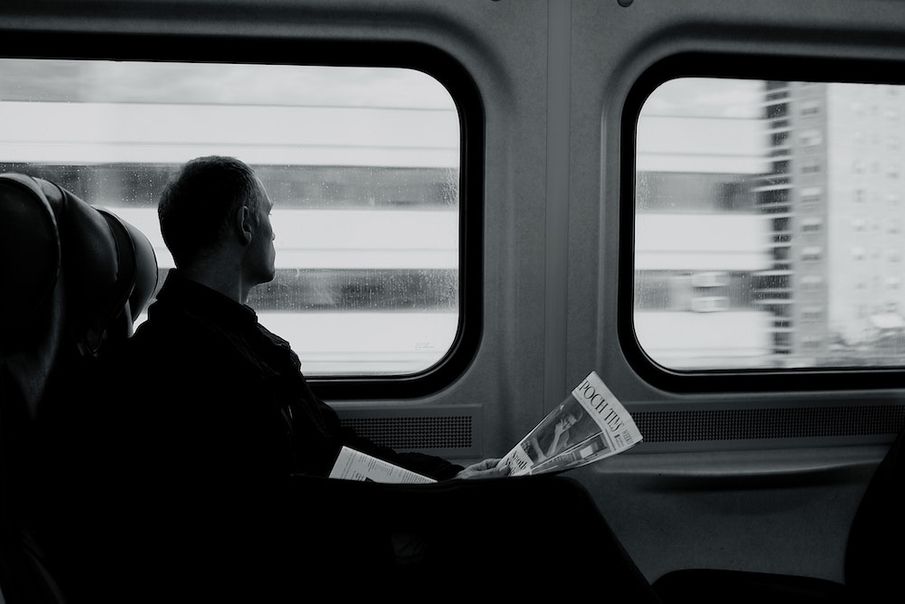For some, simply getting on a bus or train can be the ultimate challenge, with anxiety and stress leaving them feeling trapped and isolated. But there are strategies out there to help ease the trauma of a journey
Isolation and mental health conditions often go hand in hand, but something not spoken about as much are the obstacles to those struggling to use public transport. Many people with mental health conditions rely on public transport, but find the whole process challenging. From planning a journey or dealing with overcrowding, to rushing for a connection and finding a seat, it can be incredibly stressful.
A lack of support, and the accessibility of public transport, seem to be the two main areas that need to be improved. There are, however, many obstacles to people with mental health conditions accessing public transport. We’ve all been in the scenario of rushing for a bus, just catching it, and then fumbling in our bag, purse or pocket for the right change. We can feel the eyes of other passengers watching us, and the impatience of the driver.
When you have a mental health condition, it can be difficult to just shrug off experiences like this, and they can discourage you from travelling again.
Accessibility problems also include not being able to find a seat, or not having the confidence to buy a ticket on a complicated machine. The stress of missing your train or bus, or a further connection, puts many people off. Often, it’s feelings of a lack of control that raises anxiety levels. Why has the Tube stopped between stations? Why have we suddenly speeded up? The big issue for many is overcrowding, as crowds, and feeling trapped in confined spaces, are common triggers for people who live with anxiety or who experience panic attacks.

For those with severe mental health difficulties, there are also barriers to driving. With bipolar disorder, psychosis, schizoaffective disorder, or schizophrenia, you have to inform the DVLA (Driver and Vehicle Licensing Agency) about your mental health condition. If a doctor decides your illness is hampering your ability to drive, you may have to surrender your license.
Not having access to a car, and feeling unable to use public transport, can leave people trapped in their own homes, and the impact is profound on someone who lives with, or is recovering from, a mental health condition. Your world can feel like it’s shrunk. It can lead to loneliness and a loss of self-worth, as people may feel they can’t access opportunities, doctor’s appointments or therapy, be part of their community, or travel to see family or friends.
Transport is a vital link to the outside world. But for many, that link is missing.
But it’s not all doom and gloom. Transport for London has a number of initiatives to help. For people with claustrophobia and anxiety, it launched a map showing which sections are underground, or have long stretches of tunnels.
The ‘Please Offer Me A Seat’ badge was introduced to help disabled people, and those with hidden conditions and injuries, find a seat on public transport more easily.
Transport for Wales has introduced the Orange Wallet scheme, designed to help people on the autistic spectrum communicate with staff. Virgin Trains offer Just A Minute cards, that allow people to alert staff that they have an invisible disability.
Hidden illnesses also have obstacles, and people need assistance that is appropriate and empathetic
There are also things you can do to manage the stress of travelling. Planning a journey in advance, checking for delays or closures the evening before, and on the morning you’re travelling, will ease anxieties. Allow plenty of time for your journey, to manage unexpected delays. Have a backup plan; is there another route you could take? Perhaps ask a close friend or a family member to travel with you.
Try to avoid travelling around rush hour, or particularly busy times. Check to see if there is a sporting event or concert near your destination, and remember that meditation and mindfulness can help – there are a number of meditation apps available that you can listen to while travelling.
More still needs to be done to help people with mental health conditions access public transport, such as training for staff in mental health awareness, or having a mental health first aider at stations and transport terminals. Hidden illnesses also have obstacles, and people need assistance that is appropriate and empathetic.
How you can help others
- Offer your seat, or ask someone to stand on their behalf.
- Reassure them. Stay calm and speak in positive terms: “It will pass soon”, “We’re nearly at the station.”
- Offer them water. Mental health conditions often have physical symptoms such as nausea, headaches, and dizziness.
- Encourage them to breathe slowly. They should try to breathe in through their nose, and out through their mouth. Show them how, and use the technique alongside them.
- Give them space if needed, and try to find a quieter carriage for them.
- Accompany them off the bus/train/Tube if you’re able to. Always seek medical help if their symptoms worsen.
For more information about anxiety, visit counselling-directory.org.uk


Comments